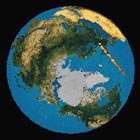
| Bad Astronomy |
|
|
|
BA Blog
|
|
Q & BA
|
|
Bulletin Board
|
| Media |
|
|
|
Bitesize Astronomy
|
|
Bad Astro Store
|
|
Mad Science
|
|
Fun Stuff
|
| Site Info |
|
|
|
Links
|
| RELATED SITES |
| - Universe Today |
| - APOD |
| - The Nine Planets |
| - Mystery Investigators |
| - Slacker Astronomy |
| - Skepticality |
Buy My Stuff

Keep Bad Astronomy close to your heart, and help make me
filthy rich. Hey, it's either this or one of those really
irritating PayPal donation buttons here.
Not all astronomy is so bad...

Years ago, I attended an interesting meeting. It was the annual summer meeting of the Society for Scientific Exploration (SSE), a group of scientists dedicated to looking into claims on the fringe of science. These are not necessarily claims of UFO's, ghosts and the like, but anything that is ignored by mainstream science. I was impressed with the spectrum of work being looked into. Many of the topics were very odd, and things I had never considered before (trying to scientifically demonstrate that a computer random number generator could be influenced by thought, or the effect of magnetic fields on the development of fly larvae). There were some talks that were not so scientifically grounded, and were little more than unsubstantiated New Age type claims and badly researched paranormal activity. However, the majority of the talks were about interesting topics that were not receiving any coverage by mainstream science.
One of the talks was given by a man with a very extraordinary claim: the Earth was being bombarded by huge numbers of minicomets every day. The only evidence he showed was a NASA satellite image of the Earth with a black spot on it. He claimed that this was ultraviolet absorption by the water vapor in such a comet. However, the spot was very small and looked to most everyone there like a data dropout: sometimes data gets lost when the satellite beams the picture to the Earth, and you get a black pixel in the image.
The problem was compounded by the fact that the man giving the talk was not the main researcher, but someone who was co-writing a book with him. [NOTE: (July 14, 1997) Since I originally wrote this page, I have found out that the speaker was indeed Patrick Huyghe, Frank's co-author of "The Big Splash", a book about these minicomets.] He was not as familiar with the subject as he could have been, and when I approached him later he couldn't answer my questions. Why don't we see these from the ground? Should we see evidence of these things hitting the Moon? I remember thinking that these guys better get much better evidence if they want to convince anybody. Basically, I didn't believe them. To be honest, I thought the idea was silly.
As it turns out, I was both right and wrong. I was right: they needed better evidence, and it looks like they got it; and I was wrong: the idea may not be so silly after all. A new NASA satellite appears to have vindicated Lou Frank's study, showing that perhaps thousands of these snowballs are vaporized in the upper atmosphere every day. It is counter to much other evidence we have, but their images are hard to deny (for more info, check out my Bitesize Astronomy page about this). Certainly something is hitting our atmosphere, although just what they are is not yet proven. They may indeed be minicomets, or they may be something else entirely. [Note added May 8, 2000: or they may be nothing at all. The controversy over mini-comets rages on, but a lot of the evidence I have seen points to these 'holes' being detector artifacts; that is, not real objects but flaws in the way the data are produced. A good look at both sides of the debate can be found at the NASA/Marshall Spaceflight Center website.]
There are still many many questions about all this, and the evidence is still not all in. But it's a fascinating result, and if true it will change the way we think about comets, how they are formed, and how many there are. What forms these things? What are they made of? Why haven't we seen them before? Do they come in steadily, or are there bursts (like, over hundreds or thousands of years)? Clearly, this phenomenon is worth studying.
And what does this say about the scientific method? A few years ago, people laughed at the idea of little chunks of ice burning up in the Earth's atmosphere. We demanded evidence, and what evidence there was was not very good. But now the evidence is much better, and people are more willing to believe the results. I find this very heartening: scientists can change their minds, given proof. I think most people believe that scientists are stodgy, and unwilling to let go of old precepts, even when those precepts are profoundly out of date. I think this shows that stereotype to be false. Show us, we demand. And if you can come back and do that, your theory will be taken seriously. But as it should be, the burden is on you to prove it, and not on us to believe you.
|
|
|
|